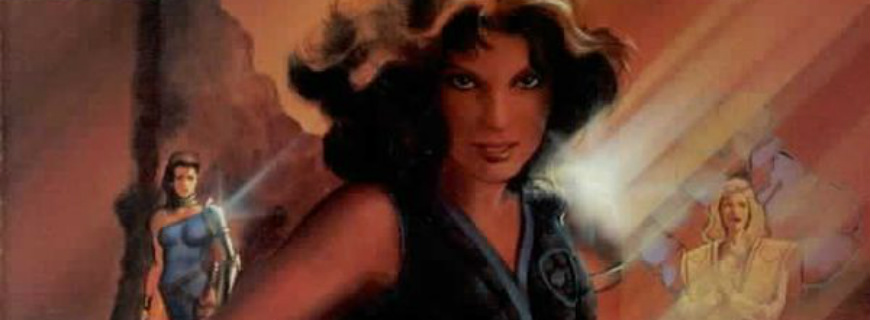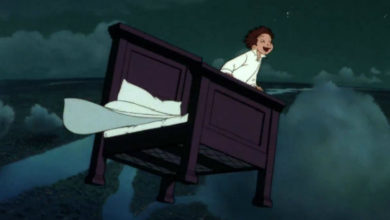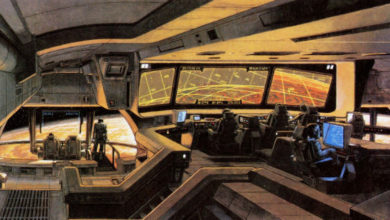Space Oddities: The Sisterhood of Steel (Christy Marx, 1984)

Space Oddities: The Sisterhood of Steel (Christy Marx, 1984)
Each month, Raz Greenberg reviews an overlooked piece of science fiction, fantasy or horror – be it a film, a television episode, a comic or a game – one that should have gotten more attention when it first came out and should still be remembered, in his opinion. This month, he reveals a wonderful fantasy-comic with a strong female character from the ’80s that was way ahead of its time.
The 1980s were a splendid time to be a geek, with the post-Star Wars era leading to a genre boom in so many industries – television, comics and gaming. And Christy Marx is perhaps the ultimate example of that decade’s geek industry. She has written for iconic cartoon shows (G.I. Joe, Jem), live action shows (Captain Power and the Soldiers of the Future and later also Babylon 5), designed computer and video games (I hope to write about one of them in a future post here) and also worked on several comics titles. Her most personal work, The Sisterhood of Steel, is a limited series published by Epic Comics. The series has all the characteristics of a popular ’80s work, but it gives them a mature, thoughtful treatment. It’s a cut above the rest.
The series follows Boronwe, a young member of The Sisterhood, a society of female warriors living on a remote island in a pseudo-medieval world, which trains its members from infancy to become deadly warriors. The story begins with the final stages of Boronwe’s training, and as she quickly distinguishes herself as one of the best warriors out there, she also makes powerful enemies both among those who oppose the Sisterhood and within the society itself.
The original series, written by Marx and drawn by Mike Vosburg, only lasted for eight issues – but it’s amazing just how much the writer/artist duo has managed to squeeze within this limited run. There’s a true feeling of a consistent, living and breathing fantasy world here, with great attention given to geography, history and politics, and the serialized plot takes readers at a breathless pace through it all. In the 30 years that passed since its initial publication, The Sisterhood of Steel has remained an incredibly entertaining reading experience.
Though the setting of a matriarchal warrior society or the idea of a female warrior were nothing new when the series debuted (reading it today brings to mind earlier heroines Wonder Woman, Red Sonja, and also the later Xena), Marx has made both her heroine and the world she lives in a far more complex creation than anything else in the genre. Boronwe is hardly a pinup girl in a bikini armor who goes around killing people – the story makes her go through a true (and painfully fast) growing-up process, from a naïve girl who believes in ideals to a tough woman who has learned some bitter lessons about the nature of cutthroat politics and had to make hard choices between her friends and the society she serves.
Why did the series end after such a short run? According to Marx’s website, it had to do with content and censorship issues. The ongoing plot, however, does reach a very satisfying conclusion at the end of issue #8 which nicely ties most (if not all) loose ends. But Marx wanted to tell more stories about Boronwe, and teamed up with another publisher, Eclipse, to produce the graphic novel Boronwe: Daughter of Death which follows the heroine’s further adventures as she joins The Sisterhood’s secret arm of assassins.
Marx’s husband Peter Ledger (who later, shortly before his untimely death in a car accident, also did the initial concept sketches for Babylon 5) took over the art for the graphic novel. Ledger was a better illustrator than Vosburg, and his drawings feel more like medieval art than Vosburg’s pulp-magazine style. To be fair, though, Vosburg did a better job than Ledger in the panels’ layout department and his pages featured better narrative flow. Daughter of Death also has some budget-related issues that may be hard for some to overlook, notably in the text department (clearly done on a 1980s word processor rather than hand-lettered). Still, the graphic novel remains a reading experience that’s every bit as exciting as the series that preceded it, in some instances taking things to a new level of brutality. Its conclusion, however, is likely to leave readers heartbroken – it ends with a cliffhanger which was clearly meant to be followed by more stories. Unfortunately, this never happened, and The Sisterhood of Steel remains unfinished to this day. But even unfinished, both the series and the graphic novel are highly recommended.
Where to get it: both Epic and Eclipse are long out of business, and the original eight issues (never collected in a single volume) along with the graphic novel are long out of print. However, it’s easy to find cheap copies of all issues and the graphic novel on Amazon and Ebay. If you want your copies signed, you can buy them directly from Marx’s website. Marx, by the way, is still very much active in both the comics and gaming industries – maybe one day she’ll tell us more of Boronwe’s adventures.




